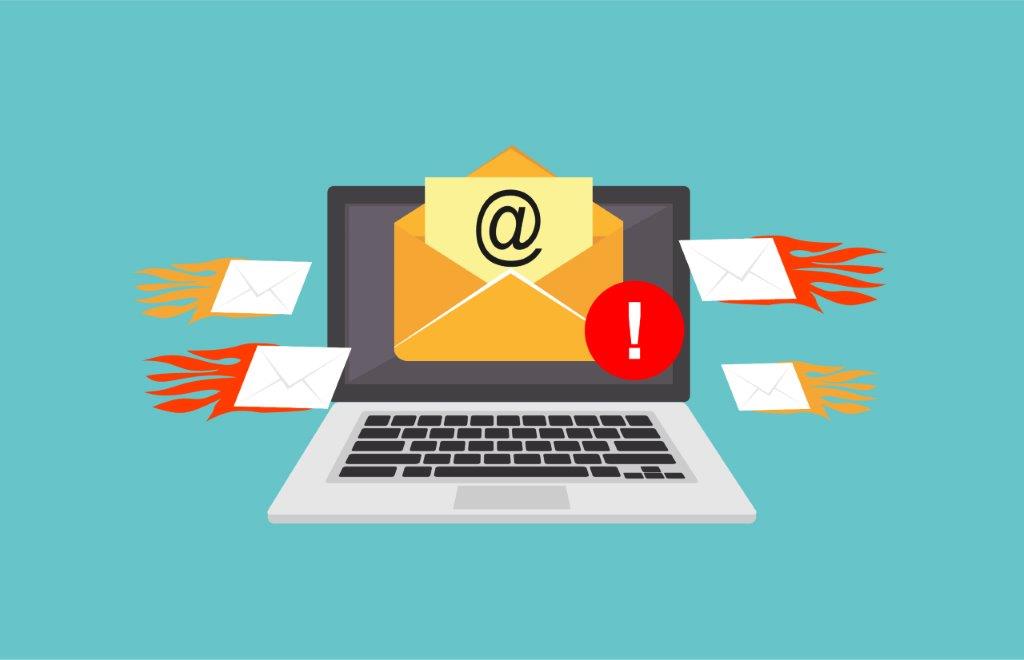Spam is the misuse of the messaging system (including most media outlets, digital delivery systems), which refers to a group of unwanted messages. The most well-known form of Spam is email spam.
What is Spam in Email?
Spam is an email that is automatically sent to different people and, in most cases, promoHotmailtes a product, service, or website.
Spam is like promotional emails sent by mail to companies or homes. Some spam contains deceptive content such as You are our lucky winner. To send a prize, send us the following information. Others include immoral images and photographs.
Spam has a detrimental effect on Internet users and seriously affects the efficiency of the network and email service providers, which is why spammers use very low-cost email and send hundreds or thousands of actual millions of emails at a time. They do. Spam attacks consume a significant amount of bandwidth, filling mailboxes and wasting the time of email readers. Sometimes Spam can be distinguished from its strange, irrational, and ridiculous titles.
Pinpoints on Email
In many cases, due to the lack of knowledge of some rules and instructions when sending email, unwanted users act so that their email address (domain and host IP) is blocklisted by many sites and as The users who send Spam are known.
If a user is blocklisted, they will face the problem that the email is closed by the email service providers or the email is sent in the spam section. The primary recipients are never notified of the email, or the email is Deleted automatically.
Types of Spam email
- Extrinsic Ads
- Spoofing
- Money Cons
- Malware attention
Given that the Internet is a place for hackers and spammers to attack and infiltrate, the following should be considered to increase security and prevent the intrusion of hackers and spammers, as well as the peace of mind of email users:
- Do not respond to fake and suspicious emails requesting personal information, especially the email password.
- Changing a simple password (a series of consecutive numbers or a password equivalent to a user account or any simple password that can be guessed.)
- Do not give your email address to others without reason, and do not register your email address on any site.
- Before sending your email address or other personal information, you should read the policies announced by the site and be aware of what the owners or administrators of the site intend to do with the information you send.
- Be careful about the options that are enabled by default. When you sign up for a new service or account, there may be a section that gives you a set of options for receiving new product or service emails.
In some cases, the options are selected by default. So if you leave them in the same situation, in the not too distant future, they will send you a lot of emails that you might not expect.
- Never click on the link in Spam.
- The first step to prevent Spam is to have an alternative email address to use as a low-value email, for which you can join the list of free email service users, such as Yahoo, Hotmail, or Gmail. Use this email when you need to enter your email address on sites, such as downloading software. Sometimes entering your email will cause you to join email lists you do not want. By entering your second email, you can ensure that Spam will not enter your primary email.
- Never display your email as it is. Please do not enter your email in blogs and forums and… in its original form. For example, you can show the email address yourname@gmail.com as your name [at] Gmail [.] Com. By doing this, as you make your email accessible to the public. You hide it from the eyes of automated spammers who are constantly searching for email addresses.
- Create a video file of your email address. By creating an image of your email address, as in the previous method, you can hide your email address from the reach of spammers while you have made it accessible to the public.
Also, you can use anti-spam. Anti-spam has many benefits, including:
Benefits of Anti-Spam
- Block Spam: Antispam blocks emails from specific addresses and searches between email titles and text. It can block emails based on the sender, even if your email is related to an email.
- Spam quarantine: Antispam filters automatically quarantine spam emails to empty the user’s inbox of Spam. Quarantined emails are usually stored for 30 days or more and then deleted.
- Automatic update of filters: Automatic update helps antispam stay up to date and protects your system against malicious links and viruses.
- Simultaneous monitoring of multiple accounts: With this feature, you can manage various emails simultaneously, such as personal, business, and emails.
- Make a white and personal list: With this feature. You can list your friends or the emails you want to receive. This will ensure that such emails are never mistaken for Spam. This list can also be edited.
- Spam Report: With this feature, you can complain about a specific email address and report it so that the email host service can check its activity.
Conclusion
Spam emails are difficult for everyone; they cheat us, steal our data and sell on the dark web. But as you saw, that could be controlled easily; all you need is awareness. So keep your email address complex, don’t share anywhere on the Internet, and most significantly, don’t interact with such spam emails. I hope this tutorial helped share information about spam emails and prevent them effectively.

